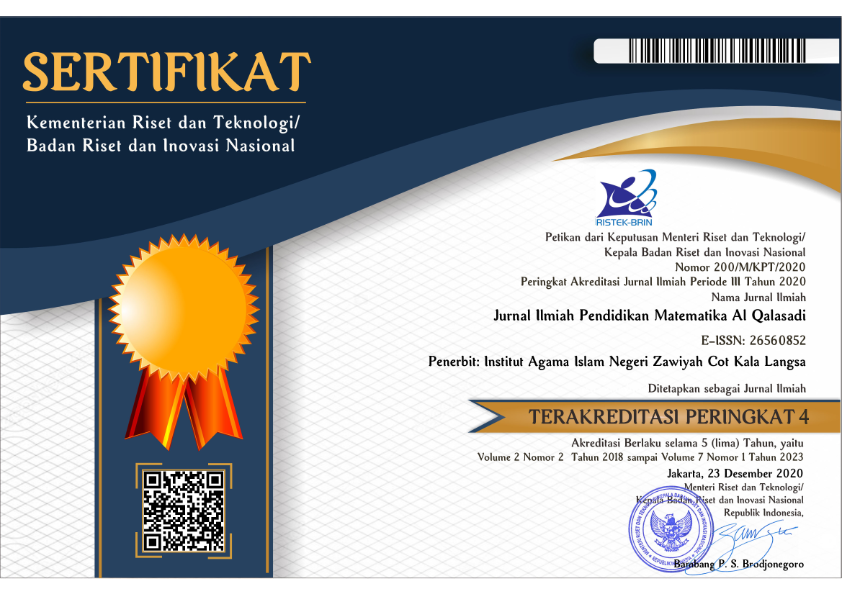Pengembangan E-Modul Berbantuan Microsoft Mathematics pada Materi Matriks di MAS Ulumul Qur’an Langsa
Abstract
Students' difficulties in understanding mathematical concepts require innovative and interactive
learning media. This study aims to develop an E-Module assisted by Microsoft Mathematics on matrix
material for grade XI students at MAS Ulumul Qur’an Langsa using the ADDIE development model
(Analysis, Design, Development, Implementation, Evaluation). The study involved 30 students,
utilizing observation, tests, and questionnaires as research instruments. Media expert validation results
showed an initial score of 80.5%, increasing to 97% in the second stage, while material expert validation
achieved 81.25% in the first stage and 92.3% in the second stage, indicating that the E-Module is highly
valid and feasible for use. Teacher and student evaluations demonstrated high practicality and
effectiveness, with average scores of 87.8% from students and 95.1% from teachers. In conclusion, the
Microsoft Mathematics-assisted E-Module on matrix material is valid, practical, and effective to use as
a learning medium on matrix material.
Downloads
Copyright (c) 2025 Fenny Anggreni, faisal, Indri Wulandari Indri Wulandari, Fitriani Fitriani, Srimuliati, M.Zaiyar M.Zaiyar

This work is licensed under a Creative Commons Attribution 4.0 International License.
Copyright Notice
Authors who publish with this journal agree to the following terms:
Authors retain copyright and grant the Jurnal Ilmiah Pendidikan Matematika Al Qalasadi of first publication with the work simultaneously licensed under a Creative Commons Attribution License (CC BY 4.0) that allows others to share the work with an acknowledgment of the work's authorship and initial publication in this journal.
Authors are able to enter into separate, additional contractual arrangements for the non-exclusive distribution of the Jurnal Ilmiah Pendidikan Matematika Al Qalasadi published version of the work (e.g., post it to an institutional repository or publish it in a book), with an acknowledgment of its initial publication in this journal.
Authors are permitted and encouraged to post their work online (e.g., in institutional repositories or on their website) prior to and during the submission process, as it can lead to productive exchanges, as well as earlier and greater citation of published work (See The Effect of Open Access)







